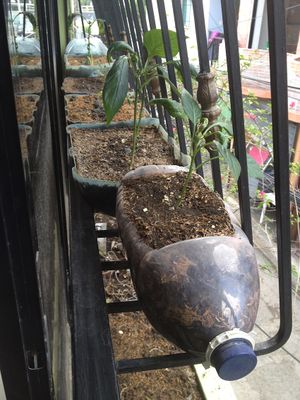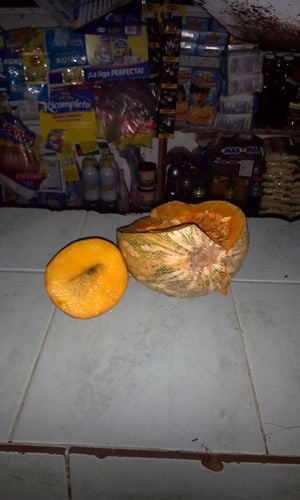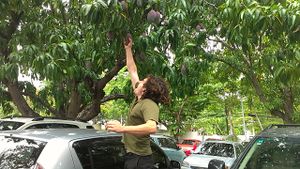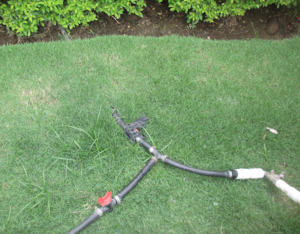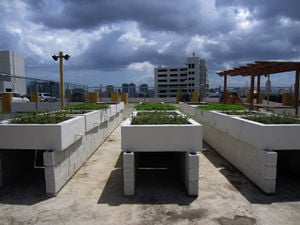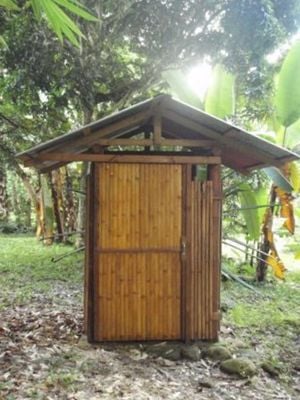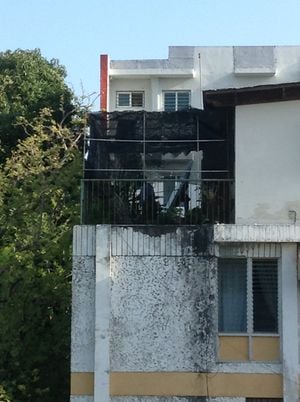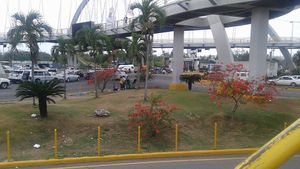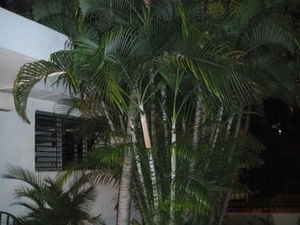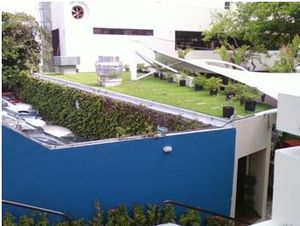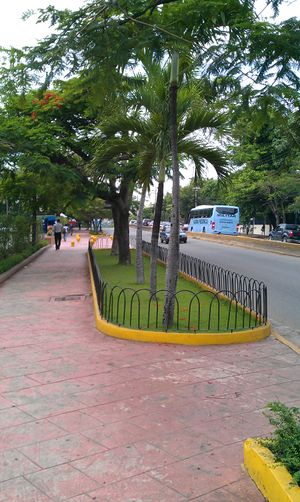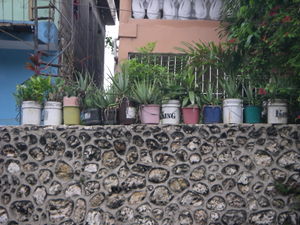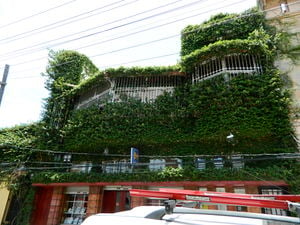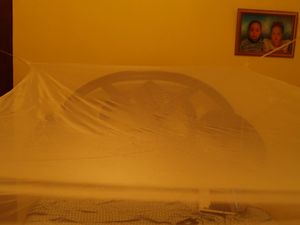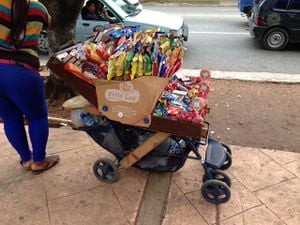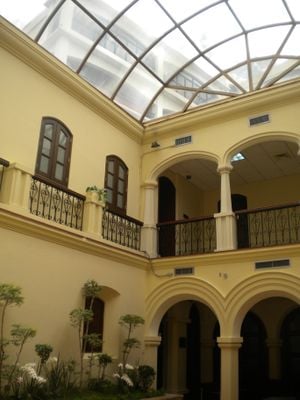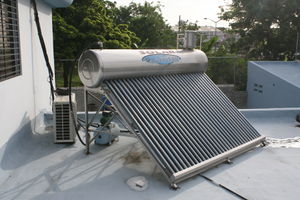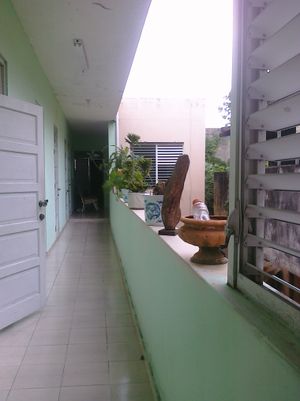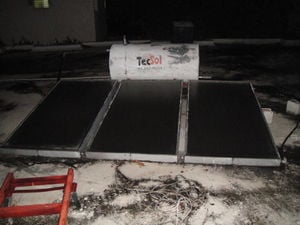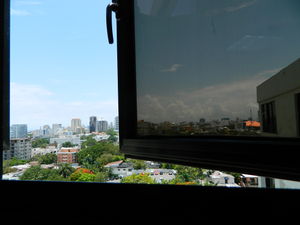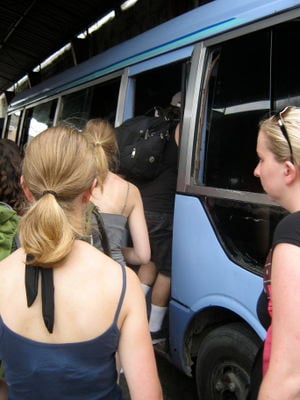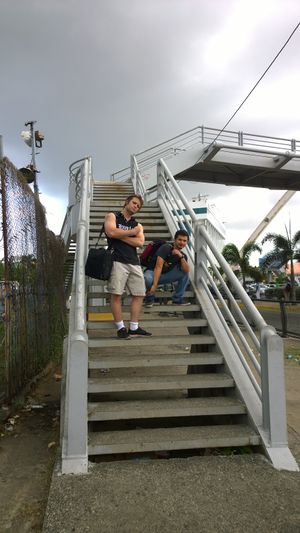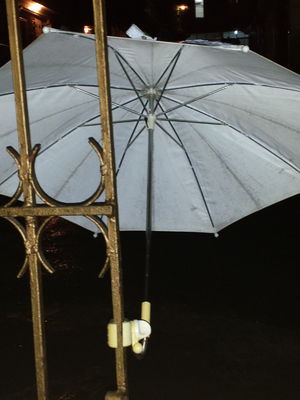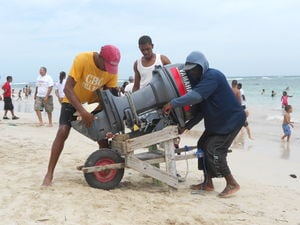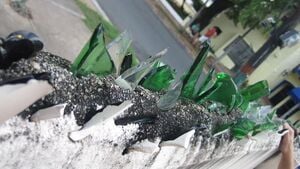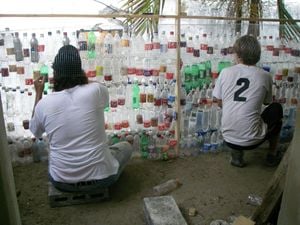Practivistas Dominicana/AT Gallery
Examples of Appropriate Technology from the Dominican Republic. This page was started by students in the Practivistas Dominicana Appropriate Technology Program.
Food[edit | edit source]
Agriculture[edit | edit source]
Architectural design[edit | edit source]
| Image | Description | Location |
|---|---|---|
 |
Palacio de los Deportes Virgilio Travieso Soto was built for the XII Central American and Caribbean Games in 1974. "The Sports Palace is a cultural, sports and artistic space, where major sporting events are held and leading figures from the world of music are presented".[1] This is appropriate technology because the dome creates an insulated space where the athletes can play and there are other performances that do take place, such as concerts and pageants. The dome shape has a high volume to surface area ratio as opposed to a rectangular structure. It also enhances acoustics by projecting voices therefore creating the use of less energy through sound equipment. The view from the pedestrian bridge allows speculation and communal interests of the La Media Naranja. A downfall of this technology is that the entirety of space is not utilized. While it is spacious inside, the higher ceiling due to the dome shape is not necessary in a gymnasium therefore more materials were used. | Felipe Maduro, Centro Olimpico Juan Pablo Duarte, Ensanche Naco, Santo Domingo |
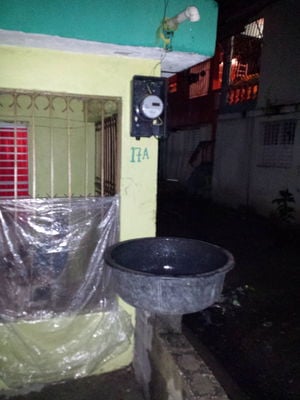 |
El canalon es usado para transportar la lluvia de el techo cuando llueve para desviarlo a la calle. Pero para usar technologia appropiada, el codo de tuvo se mueve de direction para transportar la agua a una tina donde puede ser usada la agua limpia. | Alma Rosa Primera calle tercera esquina A casa 17 |
 |
The reflective glass windows on this building allow natural light into the building without exposing the interior to the outside world, reducing the need for artificial lighting. This type of window also cuts down on glare, which lessens the need for blinds or other window shades. Because some of the incoming solar radiation is reflected, less heat is entering the building through the windows. This keeps the building cooler, reducing the need for air conditioning. | Ave Sarasota, Santo Domingo (near Bella Vista Mall) |
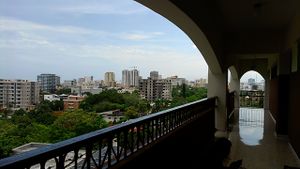 |
El pasillo al aire libre de UNIBE reduce el consumo de energia electrica artificial al permitir la entrada de luz natural. Open-air hallways at UNIBE reduce the consumption of electricity by permitting the influx of natural light. | UNIBE, 7mo piso, Santo Domingo |
 |
This is a uniquely shaped overhang that not only keeps the area underneath shaded, but allows the area to still be cooled with a breeze. | La Universidad Iberoamericana (UNIBE), Santo Domingo |
 |
This is an architectural design which allows for open air flow on the first floor and on the bottom floor; more ventilation without the use of excess materials. | Gasque, Santo Domingo |
 |
This shop used palm frawns as roofing material, therefore repurposing plam frawns that would otherwise just go back into the carbon cycle. Along with being a green solution, these plam frawns are actually quite aesthetically pleasing. | Zona Colonial, Santo Domingo |
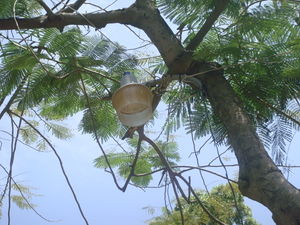 |
The use of naturally occurring objects as a base for city lighting rather then building a post for the light itself. Manipulating the present environment is generally more expensive then creative usage of the present objects. | Outside the museum of modern art, Santo Domingo |
 |
The dried palm leaves to build a roof uses a plentiful resource to build a roof on a structure: the material itself can biodegrade when the roof needs to be disposed of or replaced. The dried leaves also have a higher albedo allowing more incoming radiation to reflect. | Santo Domingo Este on the way to Boca Chica |
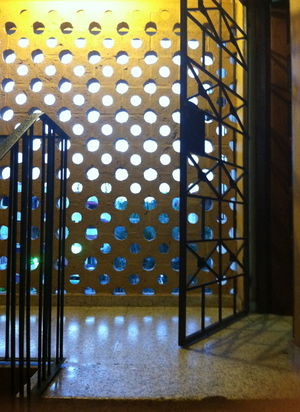 |
The staircases in Gazcue Have holes in the walls to allow light as well air into the hallways. This reduces the need for electricity in the hallways and keeps the hallways cooler on hot days. | Gazcue, Santo Domingo |
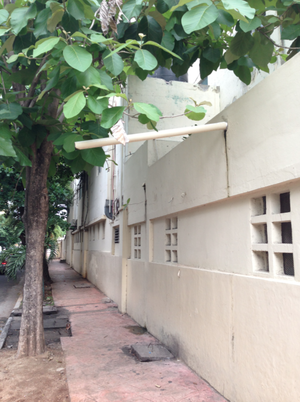 |
White roofs and walls reflect more heat than darker colored roofs, which keeps the house cooler and lessening the need to use energy spending cooling devices like fans. A rainwater drain extends across the sidewalk so the water bypasses the concrete and goes straight to the soil. | Santo Domingo near UNIBE |
 |
Living walls make use of typically wasted space and turns them into an aesthetically pleasing, temperature controlling and oxygen providing system. From the looks of it, this wall utilizes PVC pipes with holes to provide irrigation. | El Conde, Santo Domingo |
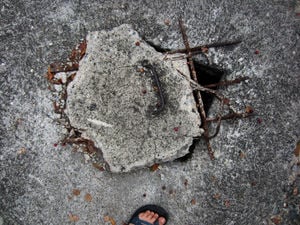 |
The streets of Santo Domingo are riddled with holes from tree root invasion, earth quakes, and other city wear and tear. The city often covers these holes with rubble from old construction projects (in this case, concrete with rebar) in order to keep people from falling into the holes. This demonstrates appropriateness because it utilizes locally available resources, reduces waste, and provides solutions to everyday issues in an affordable manner. | Gazcue, Santo Domingo |
 |
Agora Mall is the most popular mall in Santo Domingo at the moment. It consists of a "Green Methodology" where they've implemented recycling bins, automated sinks and other appropriate technology systems. Their most prominent one is in their architecture. Their design implements an enormous sky light, allowing light to come in during the day light, limiting the use of indoor lighting. It perfectly lights their "court yard", right in the center of the mall. | Ave. Lincoln, Esq. Ave. John F. Kennedy, Santo Domingo |
Biomass[edit | edit source]
Earth[edit | edit source]
Society[edit | edit source]
Solar[edit | edit source]
Transportation[edit | edit source]
Waste[edit | edit source]
Water[edit | edit source]
| Image | Description | Location |
|---|---|---|
 |
These are cement structures that are used to farm fish. There are many different types of containers that are used in this location. An individual that farms fish can increase income and their amount of food. Se trata de estructuras de cemento que se utilizan para cultivar peces. Hay muchos tipos diferentes de contenedores que se utilizan en esta ubicación. Un individuo que el pescado puede aumentar los ingresos de las explotaciones y su cantidad de alimentos. | Av. Los Americas, Santo Domingo Este |
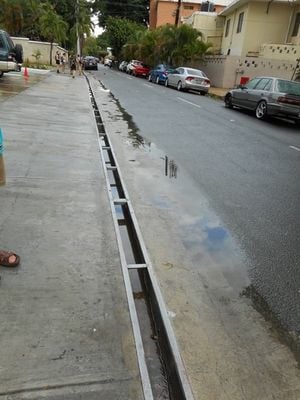 |
Esto es un desague por lluvia de agua. Esto es a lo largo de los cayes en Santo Domingo porque si no estan aqui, esta posible que los cayes inudar. Estos estan en todas partes de Santo Domingo, pero en muchos lugares en esto pais, no estan muy eficiente. Los desagues por lluvia de aqua son apropiado tecnologia por que son una muy facil implementacion en esto pais que intendar a ayudar una problema muy grande. Las problemas son que no estan un solucion muy bueno o eficiente. Los desagues necessito una mas mejore forma. (photo credit: Athena Vescott). | UNIBE, Santo Domingo |
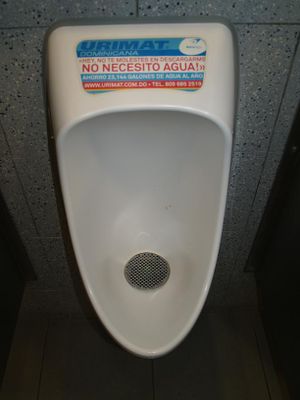 |
This is a flush-less toilet, or sometimes referred to as a waterless urinal. The design allows for the liquid to flow down the drain without the need for constant flushing, as the label indicates it will save 23,000 gallons of water per year. | Las Americas Airport, Santo Domingo |
 |
This is a water reserve system which sits on the roof, it can recollect water from rain or while a water-pump is on. This system is very efficient because it needs no electricity to work when there water is reserve left, it only uses gravitational power to work. It works because it sits on a high point, then the water just flows down. | Santo Domingo |
 |
This is an example of practical conservation of water while showering. It is quite common to see this type of appropriate technology is use in the Dominican Republic as water pressure intermittently decreases during the evening. A individual shower, using an average shower head, may use as much as 25-50 Gallons of water in 15-20 minutes, while the bucket method consumes only about 1-2 Gallons per use. This means by using the bucket method, an American family of four can save $140-280 per year on water utility bills when figuring the average cost per gallon of water is ~$0.004. | Santo Domingo |
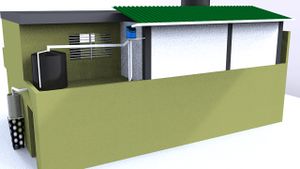 |
Rainwater catchment system for the Escuela Basica in La Yuca - La Yuca rainwater catchment | La Yuca del Naco, Santo Domingo |
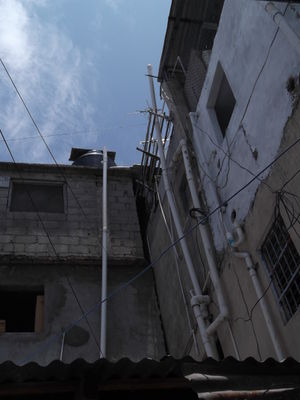 |
Water is carted by hand up to tanks like these on the roof to be used when municiple water sources are suddenly unavaliable. The potential energy of the water provides pressure for bathing, washing, and toilets. | La Yuca, Santo Domingo |
 |
Storm water drainage is a big problem in concrete covered cities where there is a lot of precipitation. Permeable surfaces such as cobblestone or tile can lessen the need for drainage systems and prevent water buildup and flooding. | Santo Domingo |
 |
Hydropower is used to power the Air conditioning in the Cafeteria at Unibe instead of fossil fuel reducing emissions. | Unibe, Santo Domingo |
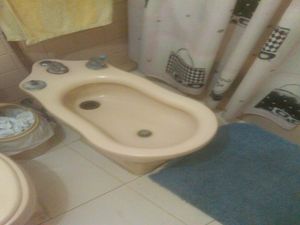 |
The Bidet is commonly used in Latin American, European, and Asian countries. It is more hygienic then using toilet paper, it reduces paper waste as well as water waste and is less costly than buying toilet paper. | Santo Domingo |
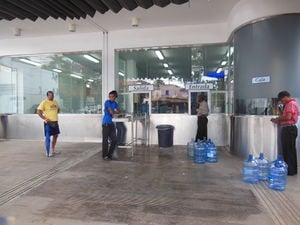 |
This water filling station provides clean and safe drinking water to people at a lower cost than supermarkets by recycling their pre-owned water jugs. It also provides jobs to citizens and lowers the risk of water born illness to poorer community members in Gazcue. | Gazcue, Santo Domingo, Dominican Republic |
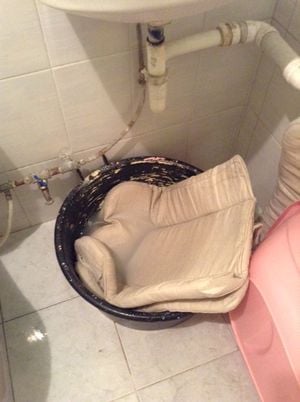 |
This is a bucket is used to collect water that is dripping from a leaky pipe under the sink. The water is used to help flush the toilet and sometimes to wash items. The water is not wasted and left on the floor and extra water is not needed to help the toilet flush. Water is a valuable resource. | Alma Rosa, Republica Dominicana |
Wind[edit | edit source]
| Image | Description | Location |
|---|---|---|
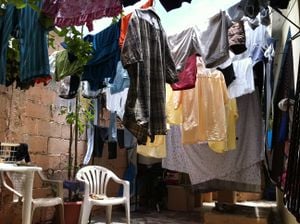 |
Clotheslines use sunlight and wind to save energy. Utiliza luz solar y viento para ahorrar energía. | Santo Domingo Este, Alma Rosa I |
 |
Es una ventana. Es un technologio appropedia por que usar naturaleza para ventilacion y para un HVAC. Pero no es una technologio appropedia por que no es bueno ventalacion y neccesito ventalador por qaue permetir mosquitos y otra bichos entra la casa. | Calle Santome, Zona Colonial, Santo Domingo |
 |
A prototype wind power system built and tested in La Yuca - La Yuca small scale renewable energy | La Yuca del Naco, Santo Domingo |
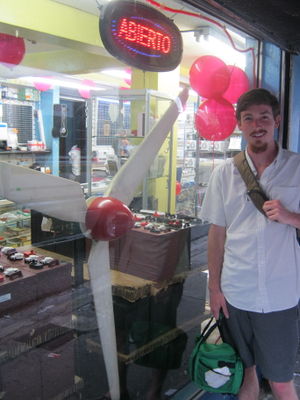 |
A wind turbine for sale in the window of an electrical store in Santo Domingo, it seems to be advertised for personal use. This is an appropriate technology (or it will be when it is in use) because there is considerable potential for harnessing wind energy in the Dominican Republic, and this turbine is small enough for use on somebody's rooftop or similar. Wind energy is generally considered an Appropriate Technology in part because it provides an alternative to fossil fuels and opportunity for communities to gain energy independence. This particular turbine can provide approximately 130 Watts of power. | La Avenida De Las Americas, Santo Domingo |
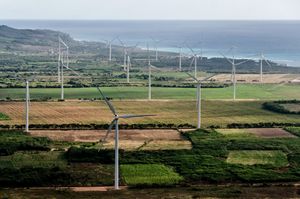 |
Parque Eolico los Cocos in the Southwest of the Dominican Republic. Wind energy provides an alternative to fossil fuels in la Republica Dominicana. | Pedernalis, Southwest Dominican Republic |
 |
This is a wind turbine located in the "National Institute of Technical Training-Profecional" (INFOTEP). This is an institute of the State, which allows low-income individuals and stakeholders to have a technical career. It is even an option to become a technician in renewable energies. | Av. John F. Kennedy, Santo Domingo |
